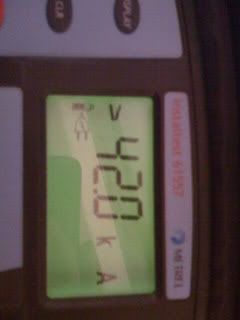If that's true, it brings me back to the point/question I keep raising. If the MCBs etc. have a 'maximum current breaking capacity' of, say, 6kA, does that not mean that their contacts could be damaged (might even weld together) if they attempted to break a current appreciably higher than that rating?
Quite possibily, such a fault would have to occur quite near to the DB, something which the standards writers take as being unlikely, in which case a few metres of cable might also be damaged and in need of replacement, though chances are that if you nailed a cable half a meter from the con unit, you'd be replaceing from the con unit up to a joint box anyway... I assume the fact that the MCB might need replacement isn't a big worry...as long as it fails in a safe way then I assume its deemed good enough for an unlikely occurance. MCBs do get damaged when clearing faults sometimes, usually when someone repeatedly closes it on to a fault until it gives up the ghost

If so, unless one could guarantee that that the main fuse would operate before the MCB attempted to break the current (and it seems very unlikely that one could guarantee that)
The MCB will start to open immediatly upon detecting the fault, and may take typically a few tens of ms to fully open, a fuselink when faced with a fault of a few KA will be clear long below this time (fuses are constant let through energy devices, whereas with breakers its opertaing time thats constant). But what you have to remember is that the impedance of the supply network will limit the rise time of the fault, and the fuse will have cleared before the fault has risen to its theoretical maximum.
.... and I remain interested to hear what sort of 'high' PFCs people do actually see on domestic installations. In my very limited experience, I haven't see or heard of any which are a lot more that 1kA, let alone 6kA or 10kA.
If I see one in excess of about 2 and a half ka then thats the exception. Its about 1.7ka at the con unit at home and thats about the top end of normal for a PME domestic supply I find.
Even in the main switch rooms of sites with an on site transformer the other side of the wall the meter doesn't often report more than abou 7ka on any phase to neutral, doubled to 14ka for a fault involving multiple phases. This is a bit out though, the calaculations suggest around double that on the transformer terminals, then obviously the transformer tails will attenuate this a bit. But as I said, loop testers do struggle with low impedances like this as most of the impedance is reactive, and contact reistance is highly significant. Its not usually a problem that you cannot get a perfect measurment though. Most installations of this nature use BS88-2 fuses at this end of the installation, which are rated to break 80ka, and where breakers are used, the MCCBs usually are typically rated somewhere in the regien of 35ka


